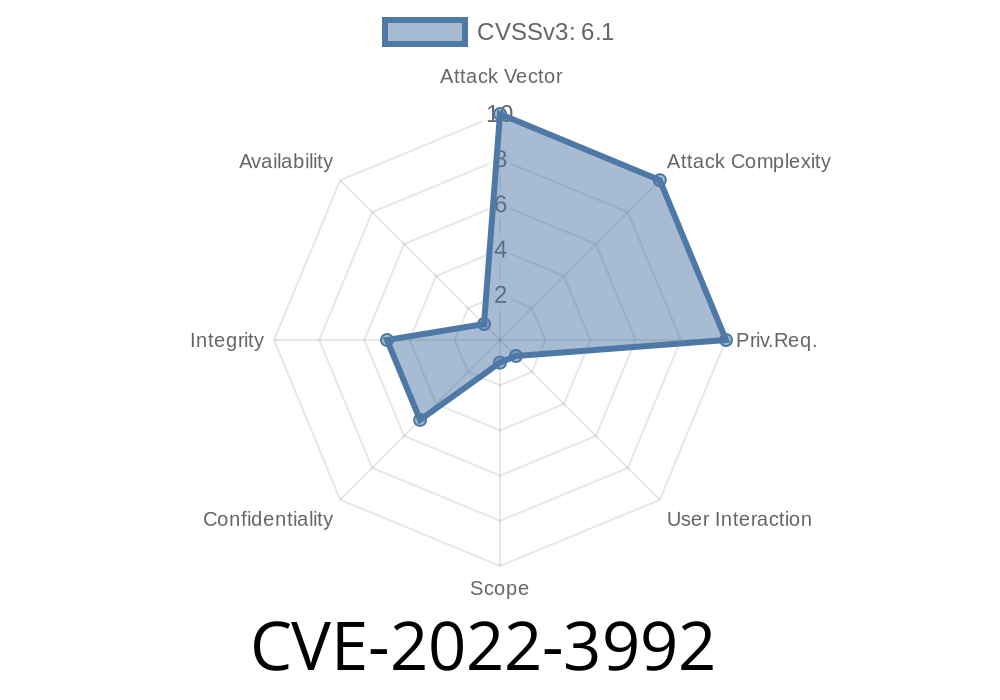A vulnerability classified as problematic has recently been discovered in the SourceCodester Sanitization Management System. This system helps developers build safer applications by automatically sanitizing user input, but ironically, it contains a security flaw that allows attackers to exploit it. In this post, we will analyze the vulnerability in detail and provide insights on its consequences, the potential attack vector, and how it can be exploited. We will also provide code snippets and reference links to help developers understand the issue and ensure their applications are safe from this attack.
Vulnerability Details
The vulnerability is identified as CVE-2022-3992 and it affects an unknown functionality in the 'admin/?page=system_info' file, which is present in the Banner Image Handler component of the SourceCodester Sanitization Management System. The vulnerability is specifically a Cross-Site Scripting (XSS) issue. XSS vulnerabilities allow an attacker to inject malicious scripts into legitimate web pages, potentially compromising the integrity and security of the application.
The attack can be launched remotely, meaning that an attacker does not need to have physical access to the system or network in order to carry out the exploit. The specific identifier for this vulnerability is VDB-213571.
Code Snippet
A typical XSS attack occurs when an attacker manipulates an input field within an application. To demonstrate this, consider the code snippet below, highlighting a vulnerable input field:
<form action="admin/?page=system_info" method="POST">
<label for="bannerText">Banner Text:</label>
<input type="text" name="bannerText" id="bannerText">
<input type="submit" value="Submit">
</form>
An attacker could potentially inject a malicious script as the banner text, causing the code to be executed whenever the victim visits the page.
Exploit
To exploit this vulnerability, an attacker might inject the following malicious script into the "bannerText" input field:
<script>alert('XSS Attack!');</script>
When this code is saved in the system and the victim visits the affected webpage, the attacker's script would be executed, displaying an alert with the message "XSS Attack!". This is just a simple example to demonstrate the attack; in practice, the injected script could cause various types of damage, including data theft, users being redirected to malicious websites, or even complete system compromise.
For more details on this vulnerability, the following references should be consulted
- CVE-2022-3992 entry in Mitre's database
- VDB-213571 entry in SourceCodester Sanitization Management System (Banner Image Handler Vulnerability)
Mitigation
To protect your application from this vulnerability, it is crucial to ensure that all input is properly sanitized before being processed. Developers should utilize secure coding practices and build input validation mechanisms to prevent the injection of malicious scripts. Additionally, regularly updating system components and regularly scanning applications for vulnerabilities is essential for maintaining a secure environment.
In summary, the CVE-2022-3992 vulnerability identified in the SourceCodester Sanitization Management System can be exploited through the Banner Image Handler component and can cause severe security repercussions. Developers should take immediate action to mitigate the risk and safeguard the integrity of their applications. Regular updates, proper input validation, and secure coding practices are essential in preventing such exploits.
Timeline
Published on: 11/14/2022 17:15:00 UTC
Last modified on: 11/17/2022 23:09:00 UTC
